F2 Documentation

Magento theme installation
Install theme on live store
If you already have a Magento store and want to apply the theme, follow the instruction below. To install the theme you only need to upload all the theme files to your server and then enable the theme in the admin panel. But to avoid unexpected problems after installation, you should first prepare your Magento. Please strictly follow the steps described in this guide:
- First of all, please make sure your Magento installation version meets the template requirements. The detailed Magento update guide you will find on the site Magento Wiki.
- It is recommended to install the theme on a test server before you install it on a live store.
- Backup Magento files and the store database.
- Disable all cache systems which you have in your Magento
- Disable Merge & Minify JavaScript Files in Stores > Configuration > Advanced > Developer > JavaScript Settings and Merge & Minify CSS Files in Stores > Configuration > Advanced > Developer > CSS Settings. You can enable this feature after installation..
- Copy the content of the archive [app folder] to the root folder of your online shop. After copying run the console and navigate to the root shop folder.
- Run the following commands in the command line, one by one:
- bin/magento setup:upgrade
- bin/magento index:reindex
- bin/magento cache:clean
- Then follow the instructions for setting up the theme.
Important: creating backup before installation of any themes or extensions in Magento is extremely important, especially if you are working on a live store.
Important: when developing your Magento store, in order to be able to see changes immediately, you should completely disable the cache. You can enable it after you finish configuring your store.
Attention!!!
Template configuration
We are going to review template configuration options based on the example. We will configure it the same way as our Live Demo template, without affecting products data.
Activate the new theme
- Open Magento admin panel and navigate to Content > Configuration menu.
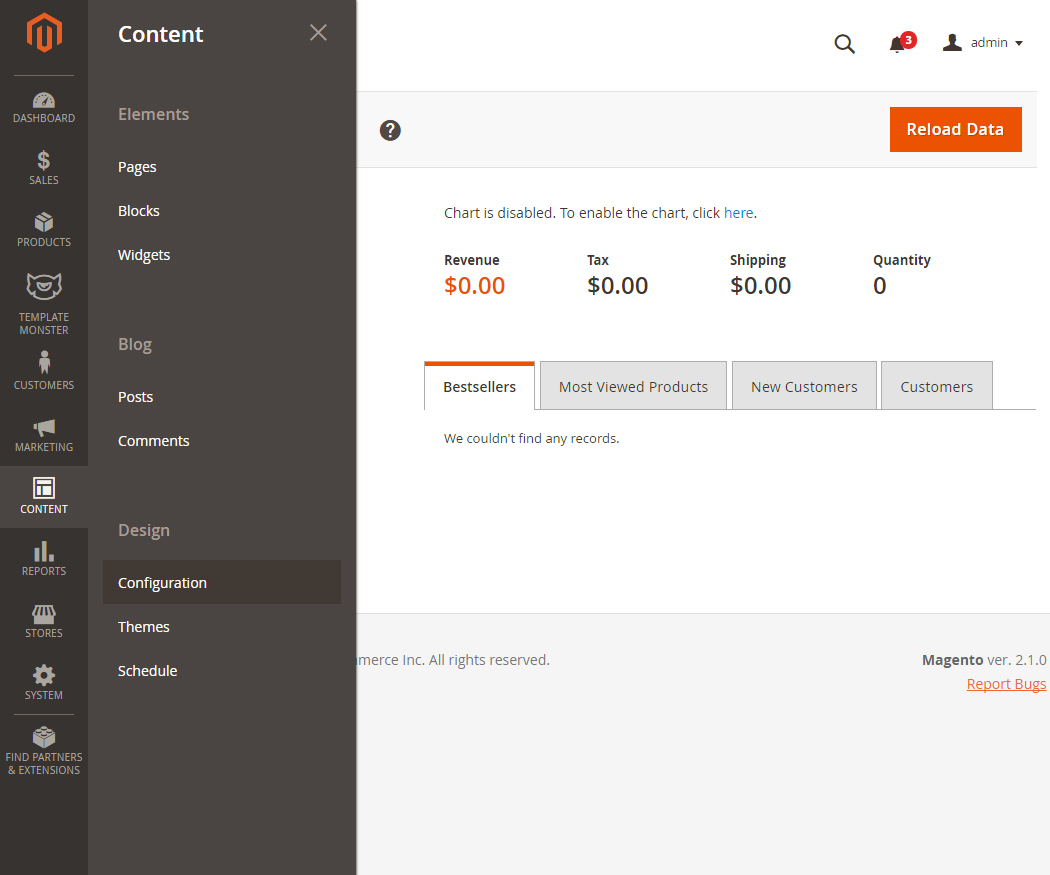
-
In the list of stores you need click edit at Global-Main Website. Also, you can click edit for a particular store view if you have them.
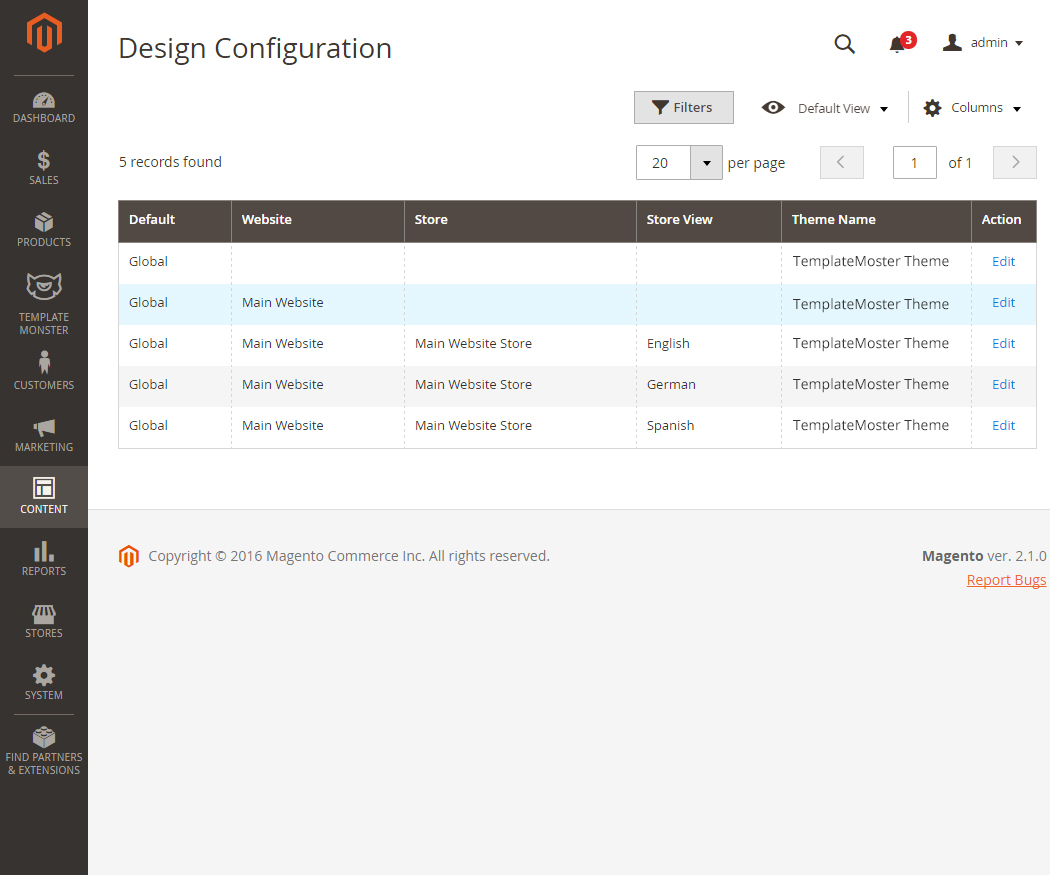
-
In the Default Theme click Applied Theme drop-down list select the required theme, then click Save Configuration button.
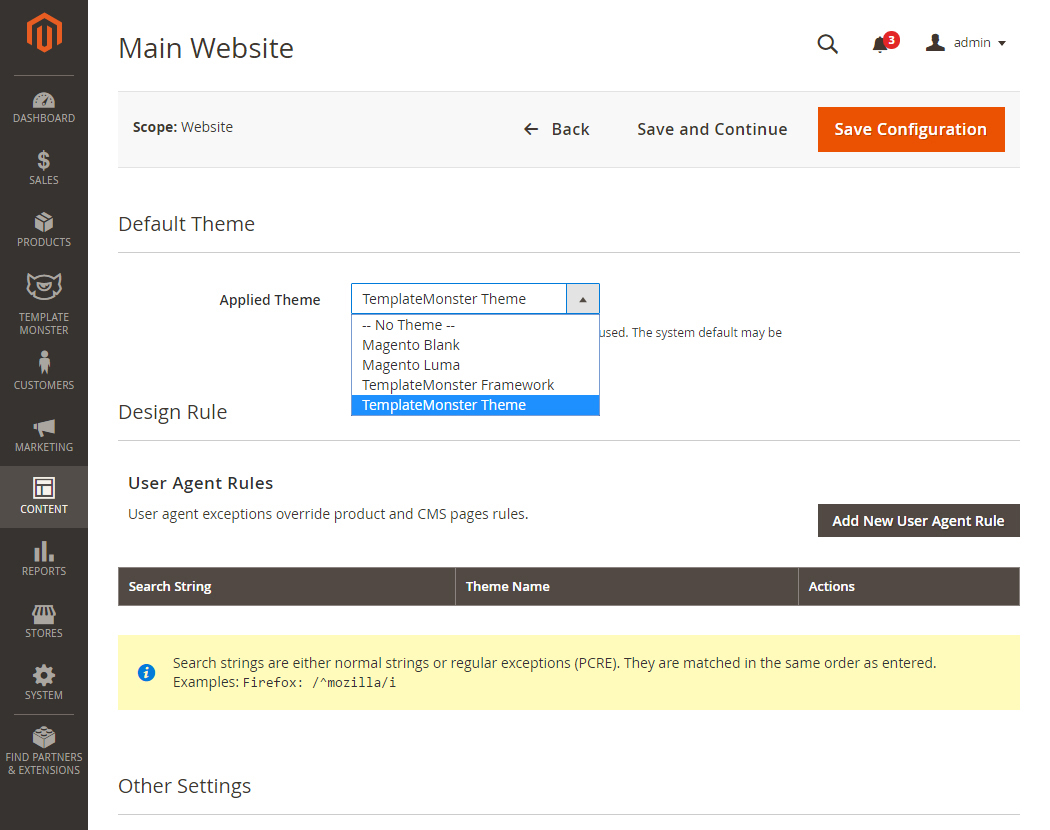
Reindex data
- Open Magento admin panel and navigate to System > Index Management menu.

- In the fist column open the drop-down list and choose the "Select All" option.
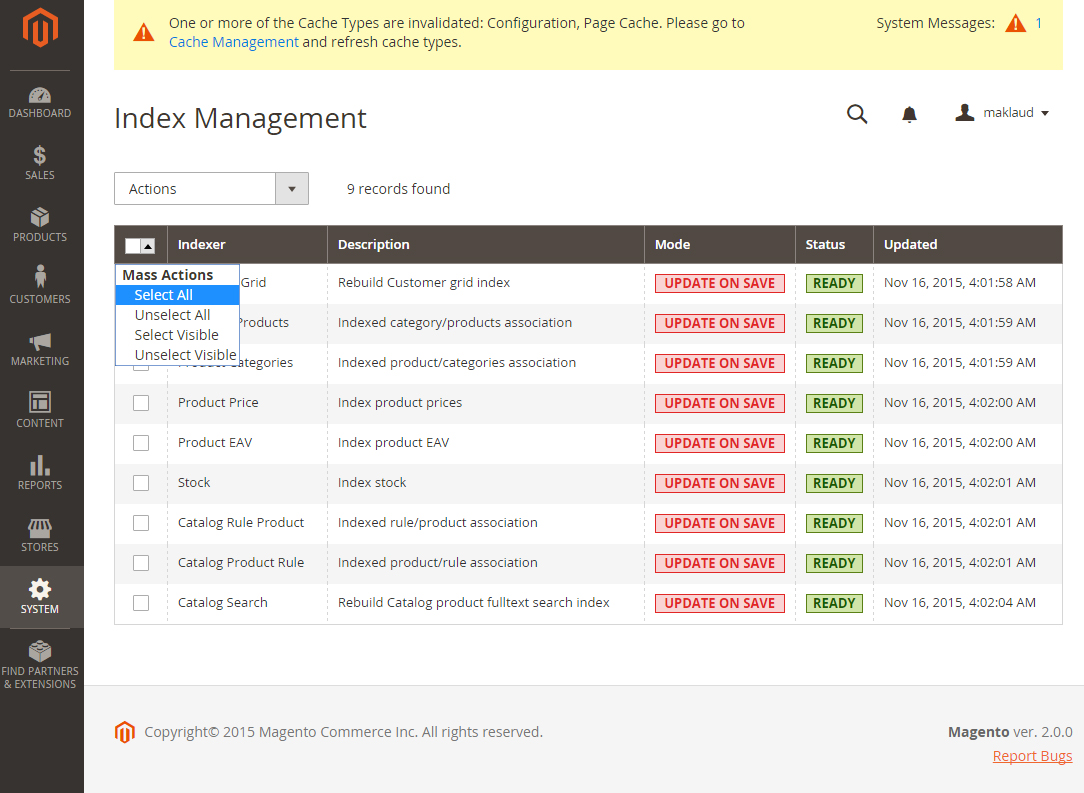
-
In the top "Actions" selector choose "Update on save" option. It will allow automatically reindex the specified data after saving any settings in the admin panel.

- Click "Submit" button.
- Please be patient, this may take a while.
Disable cache
In order to make the changes appear on your website with no delay, you need to disable cache. It prevents additional cache clearing actions after every change you make. You can enable it when you are done with store editing.
- Open Magento admin panel and navigate to System > Cache Management menu.
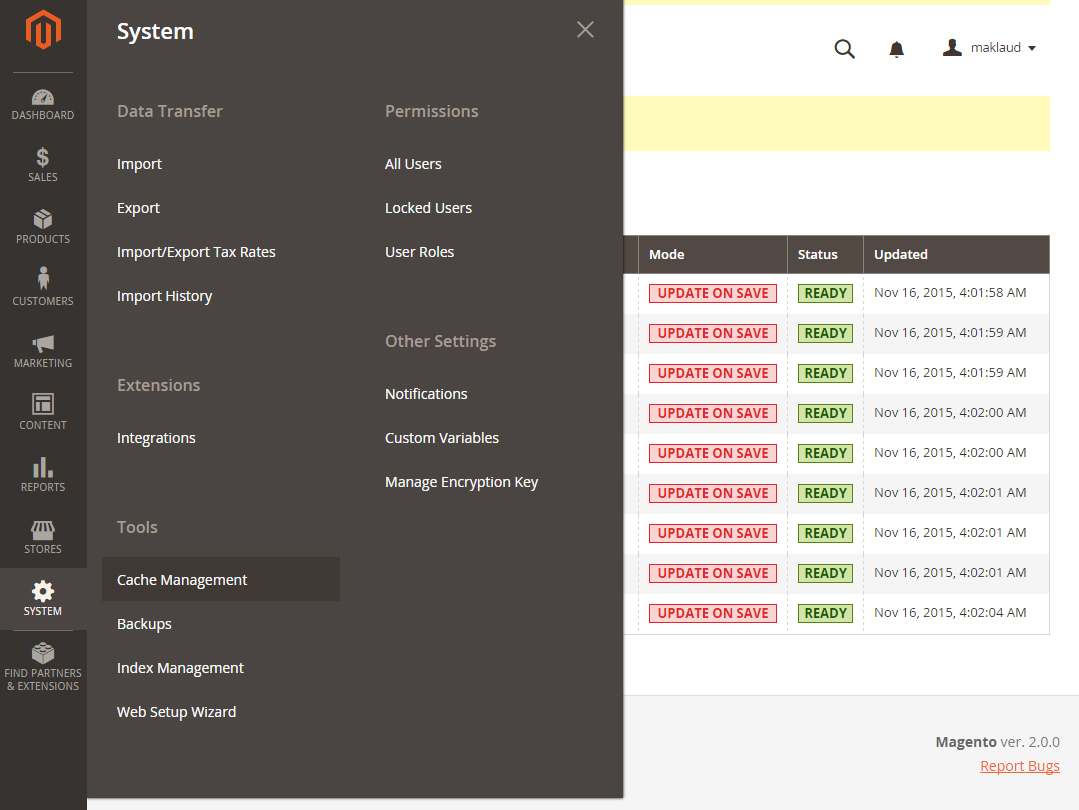
- In the fist column open the drop-down list and choose the "Select All" option.
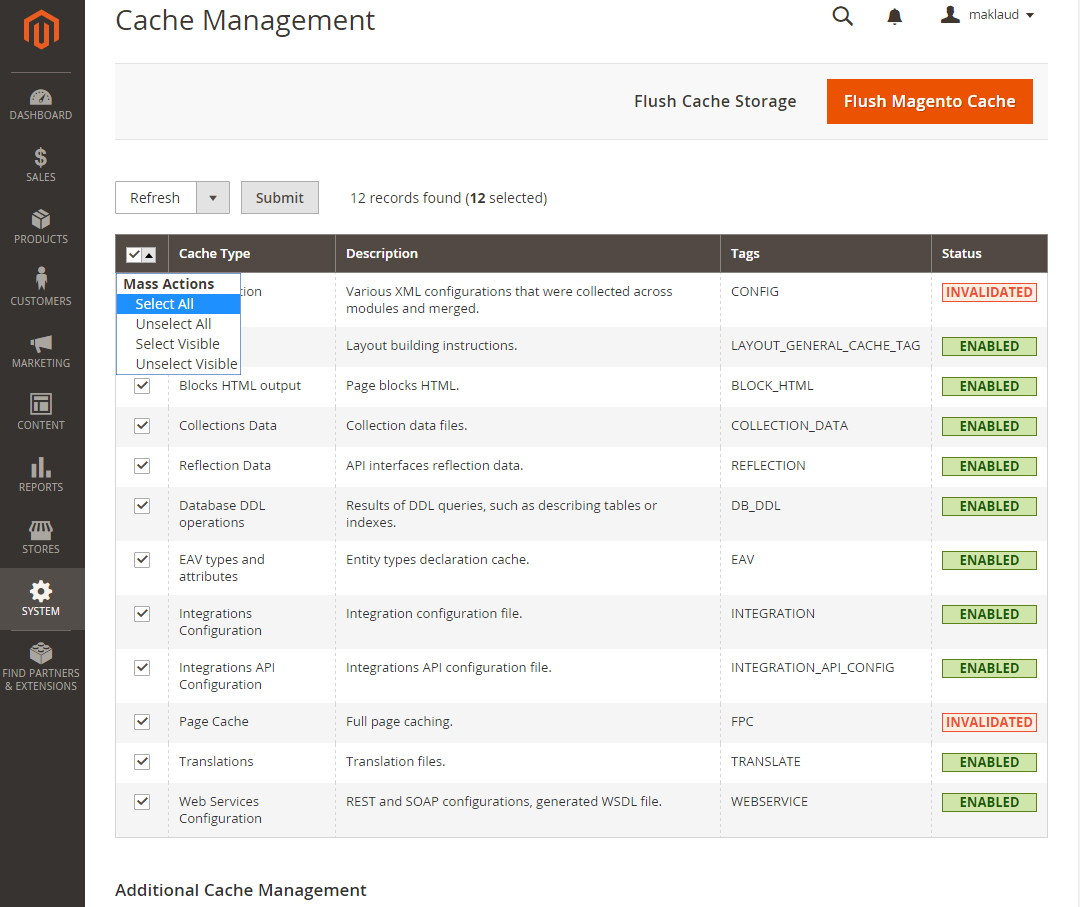
- In the top "Refresh" field select "Disable" option.
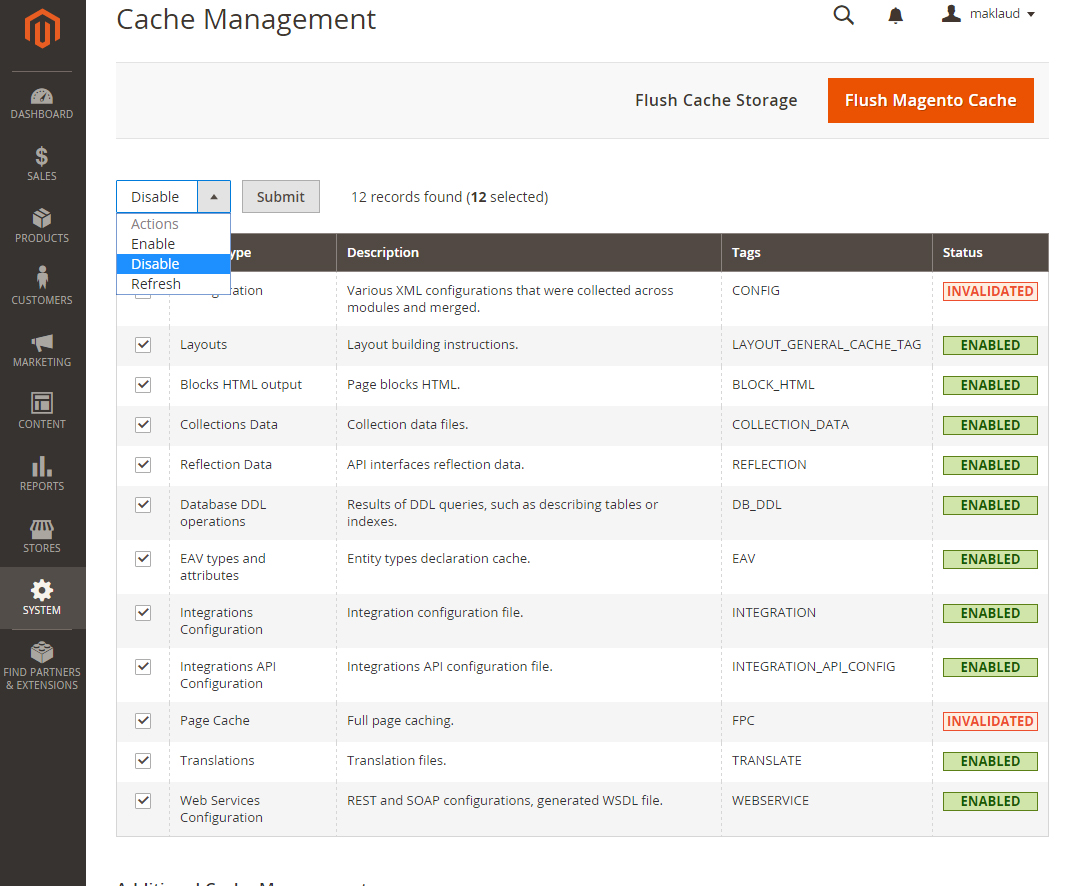
- Click "Submit" button.
Logo configuration
Please follow these steps when setting up logo image included into the theme package [you can view it on the Live Demo page].
- Open the Magento admin panel and select Content > Configuration in the side menu.
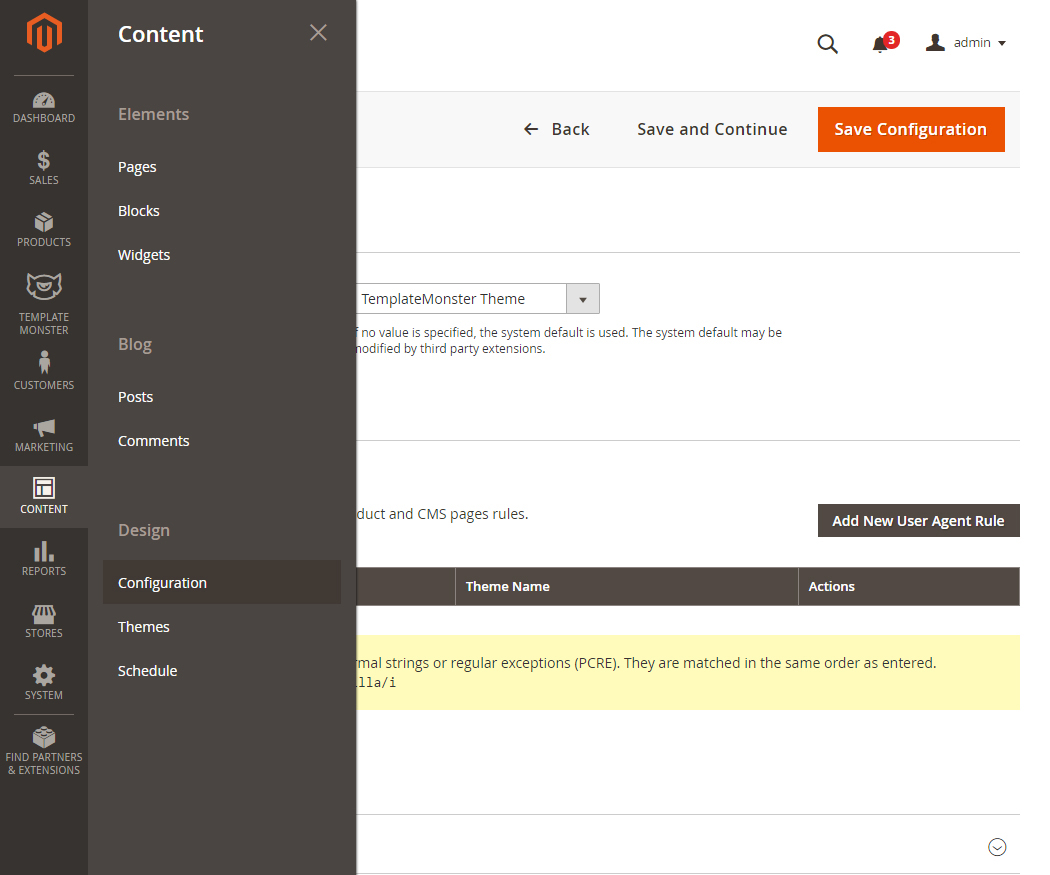
-
In the list of stores you need click edit at Global-Main Website. Also, you can click edit for a particular store view if you have them.
- Select the "Header" tab, and upload your logo.
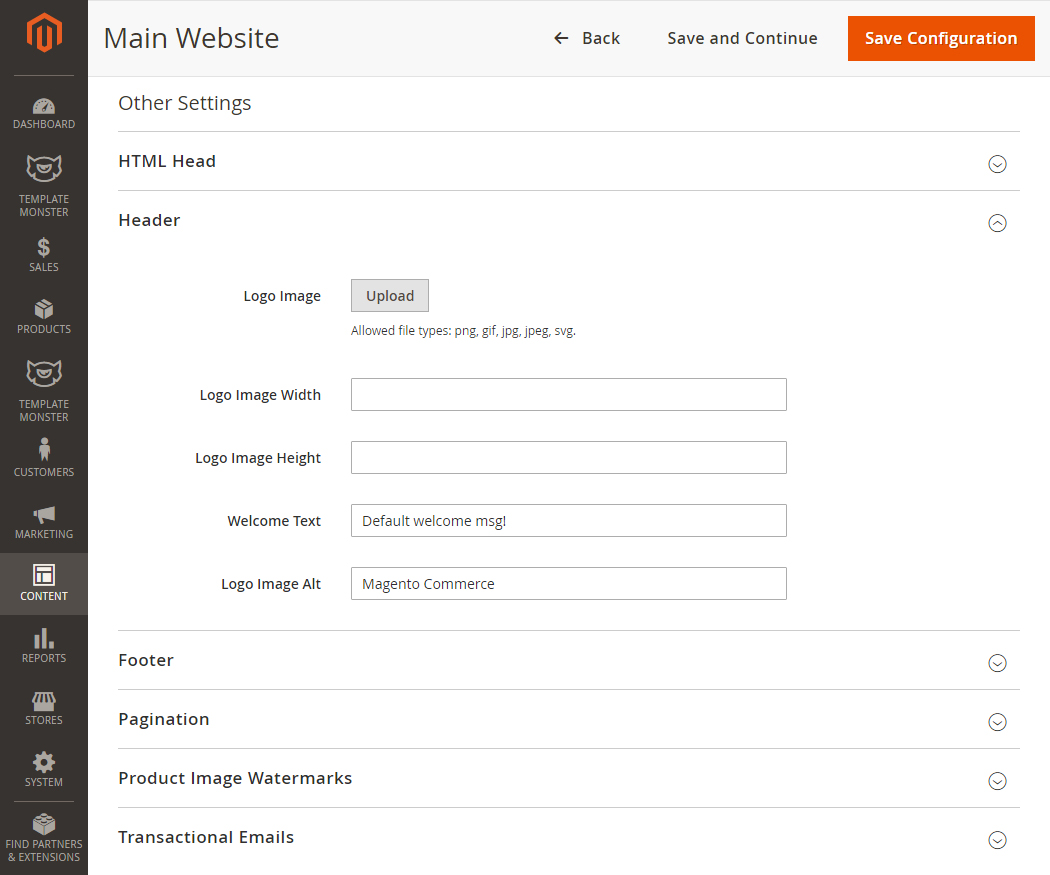
- Click "Save Config" button.

In order to install your company logo, you need to upload the logo image file into the /images folder of your Magento theme.
Static blocks configuration
When you are done with the pages configuring, you need to configure the static blocks. The procedure is similar: you need to copy the code from the source files and paste it to the corresponding fields in the Magento admin panel. You need to use a similar table but for the static blocks.
Block ID may vary in your Magento installation. You can get correct block id from Content > Blocks section in Admin panel.
- In the top menu navigate to Content > Blocks.
- In the top right corner click the "Add New block" button to add a new static block.
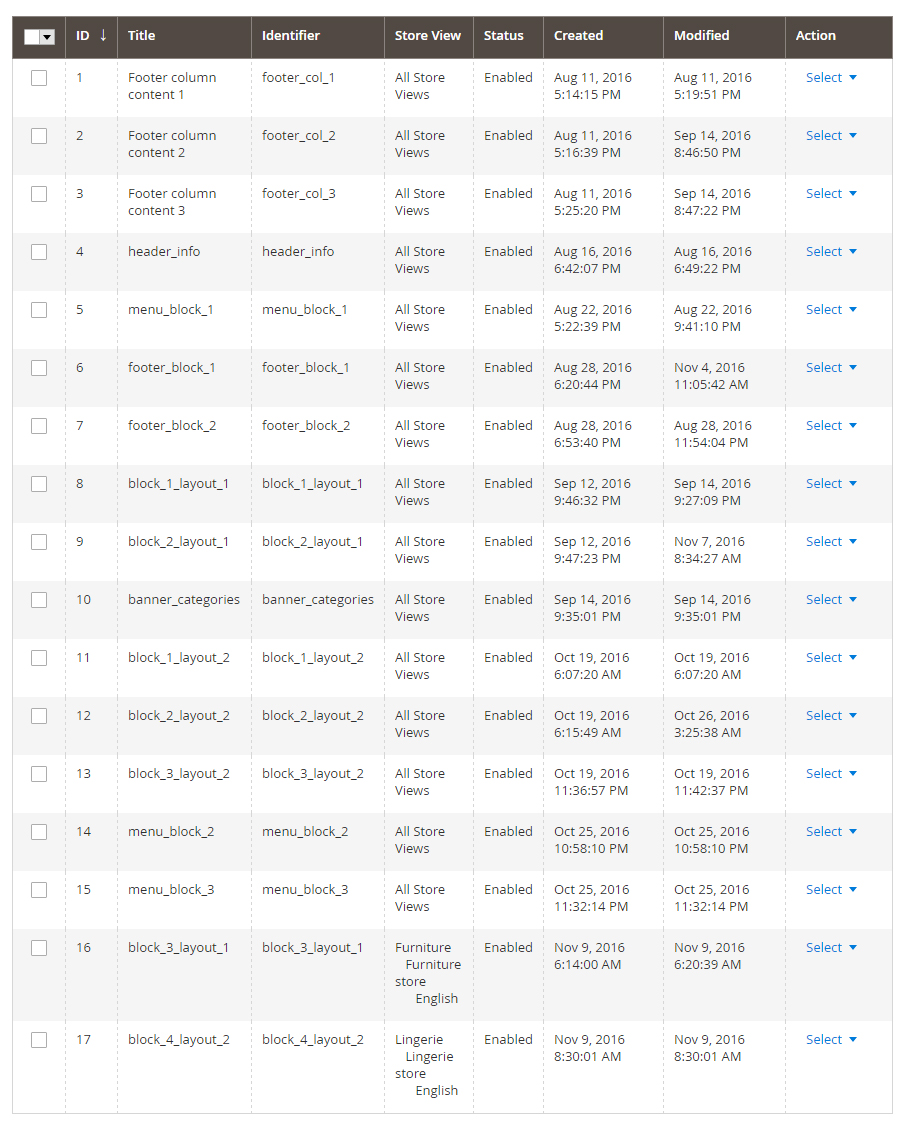
-
Specify the block name and identifier. You can get the block details from the table at the template configuration page [check the Pages Configuration part].
- Open the block source file and copy the HTML code into the content area.

NOTE: some templates do not contain any static blocks, so the table can be empty.
The source files with the static blocks code are stored in the "sources\demo\static_blocks\" folder of the template package.
How to display our blocks with static content?
- In the top menu navigate to Content > Widgets
- In the top right corner click the "Add Widget" button to add a new widget.
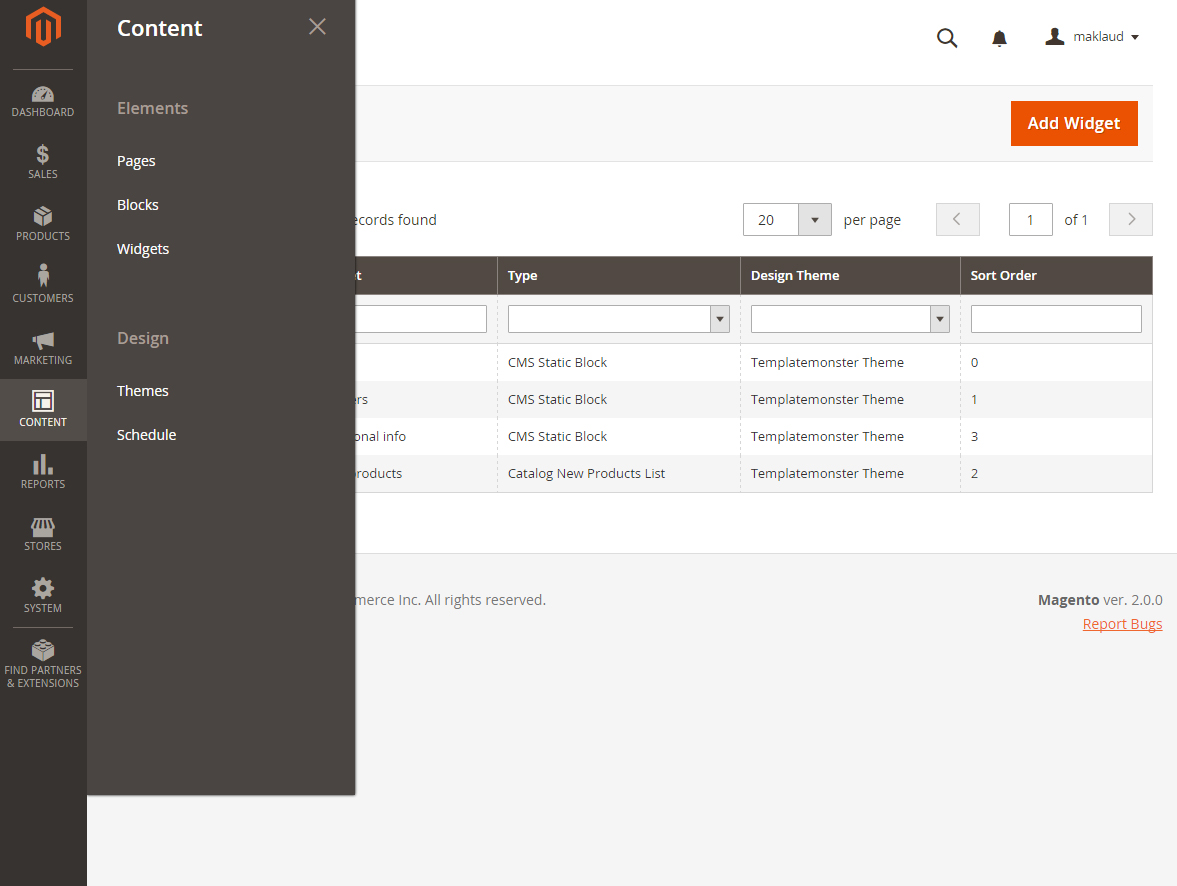
- Specify the widget type CMS Static Block and theme that you want to apply the widget to, then click Continue button.
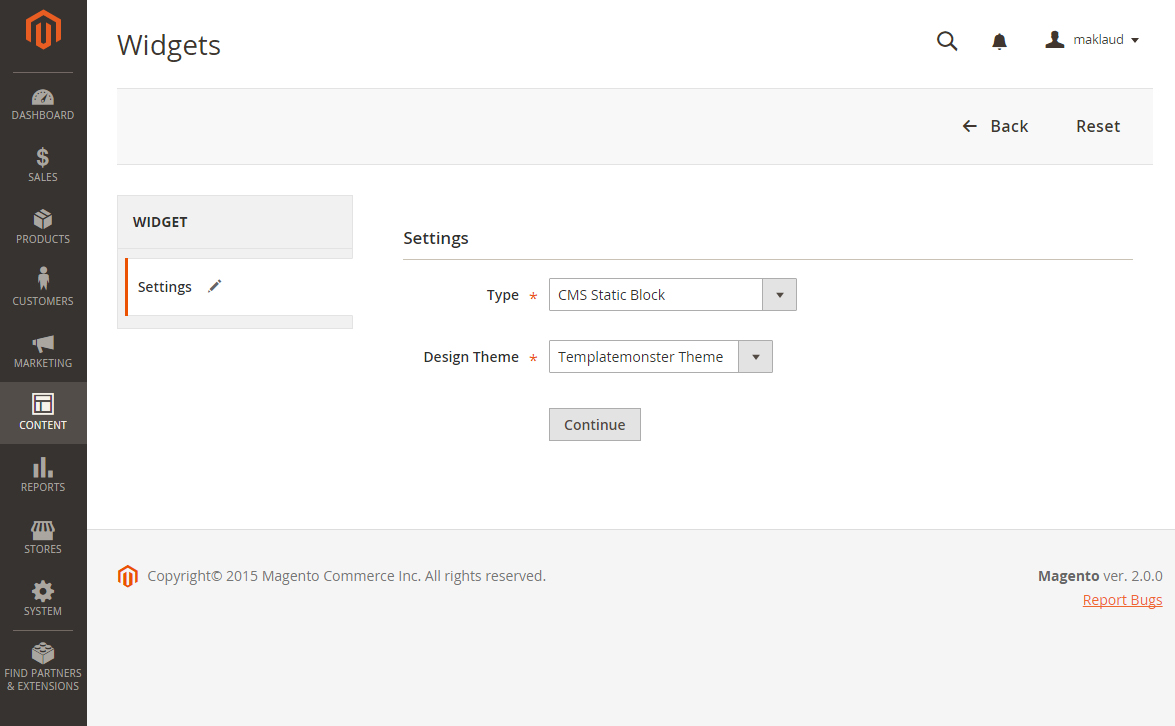
-
On the next page in the Widget Title field enter the name of the widget which will be displayed in the admin panel. In the Assign to Store Views field you need to select store views which will display the widget. In the Layout Updates block click Add Layout Update button. In the Display On field you can select pages where widget will be displayed on. Depending on selected pages you will have opportunity to fill in the additional fields.
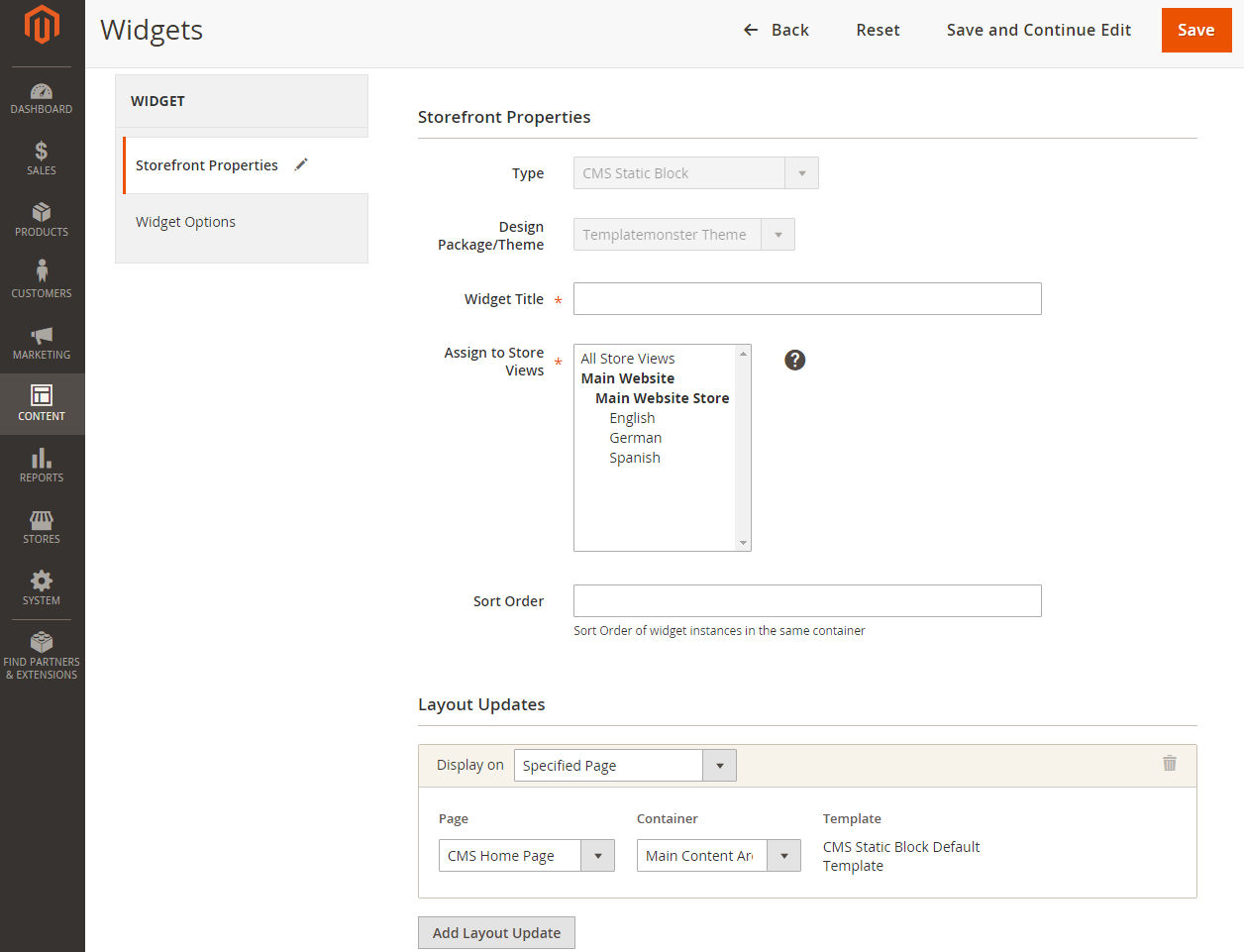
- In the left sidebar click Widget Options tab and select the static block you are referring to. Don't forget to save changes.
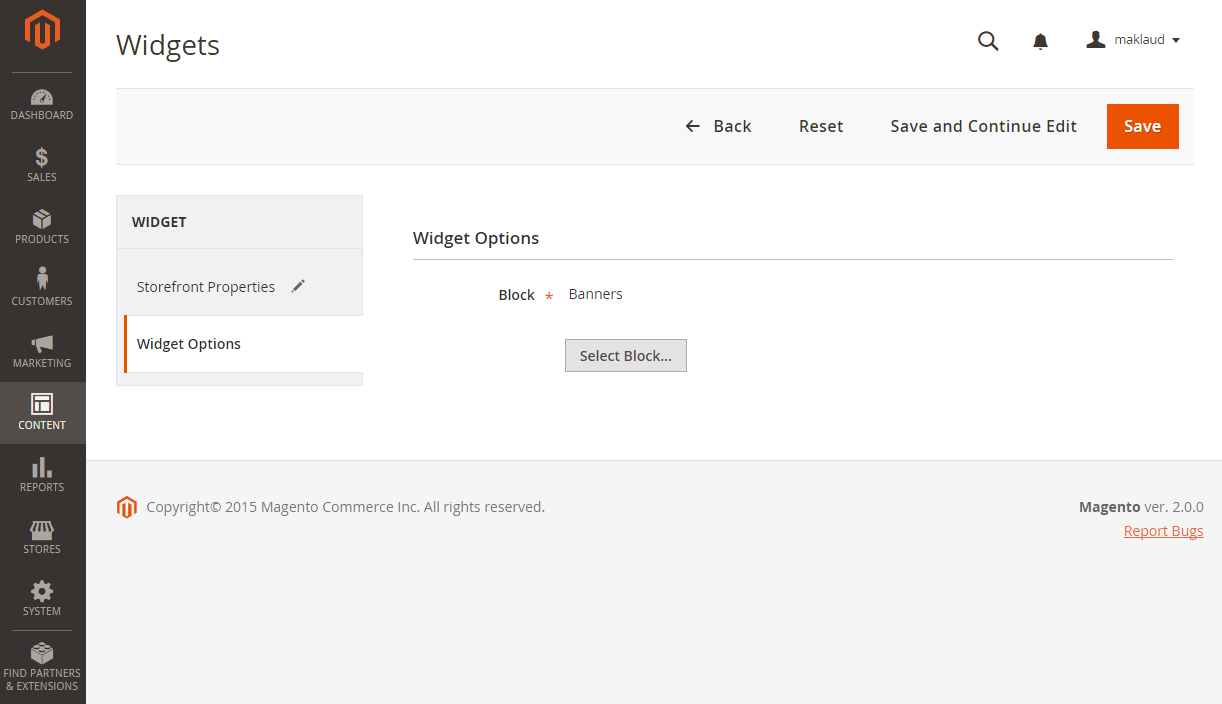
When you are done configuring store pages and blocks, your store is ready to go.
Pages configuration
In order to make your template look exactly like our Live Demo, you need to set up store pages in a specific way. We provide all the files with the pages source code. You need to add them into Magento admin panel as per the instructions below using the settings table. Settings table is located on the Template Settings page on the template preview page.
The main template page will be affected the most. It usually contains the following elements: banners, slider, etc.
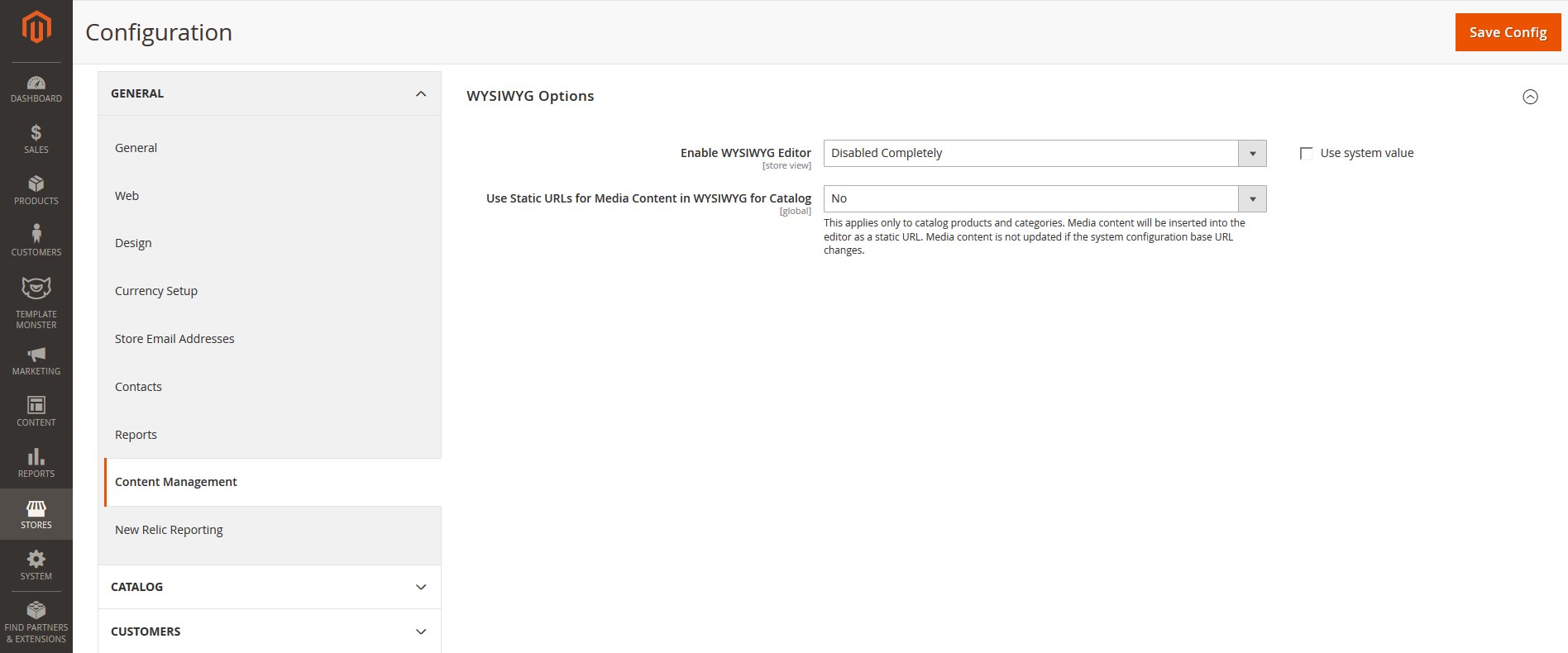
In case you have already made the changes to your pages code and would like to add our code without affecting your changes, it is recommended to contact professional technicians or prepare a backup before making changes.
-
From the top menu select Content > Pages. Here you can find all the store pages. Home page, About Us and Customer Service should already be available, so you don't need to add them. You only need to update the pages HTML and XML content. Open any of them in order to get the access to the content.
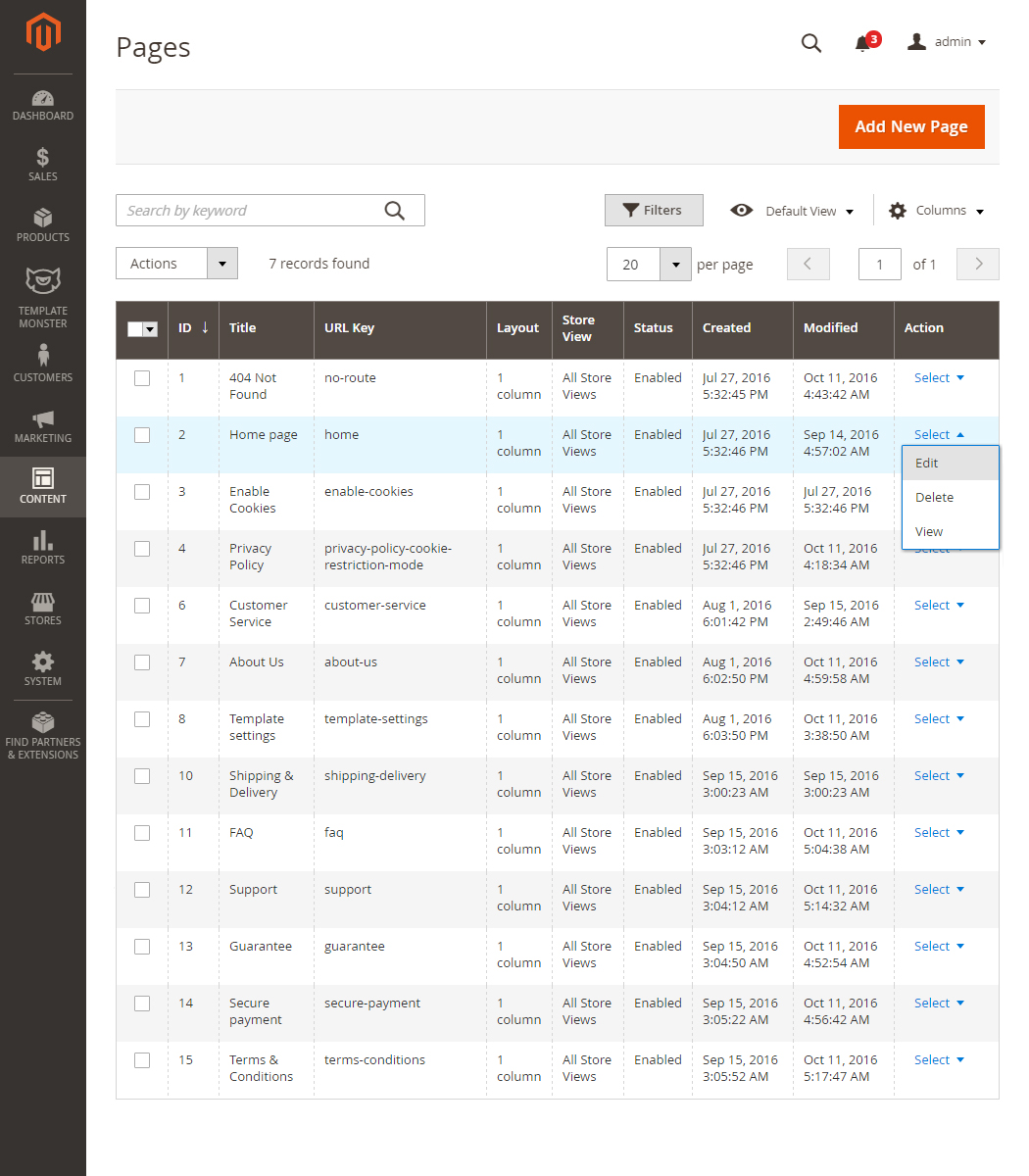
-
Open the page and select the Content tab. It contains the HTML code of the page. You can take the page HTML code from the appropriate source file. You can see the list of source files included in the "Template Settings" section on your templates preview page. Copy the code from the source file and paste it to the content area.
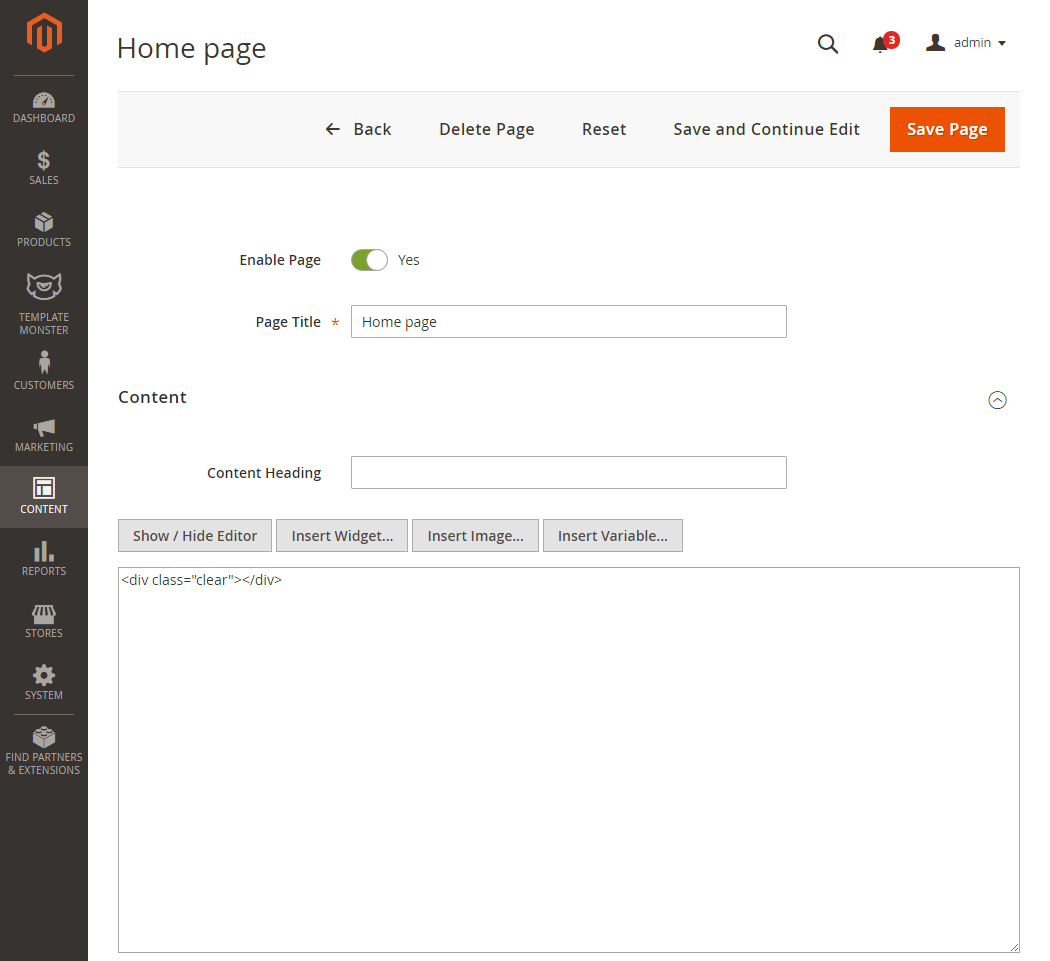
-
When you are done with the HTML code, switch to "Design" tab. It contains the page XML code. XML code allows you to add Magento static blocks and widgets to the page. The XML code should be copied the same way as the HTML from the source file. Copy the XML code to the "Layout Update XML" area.
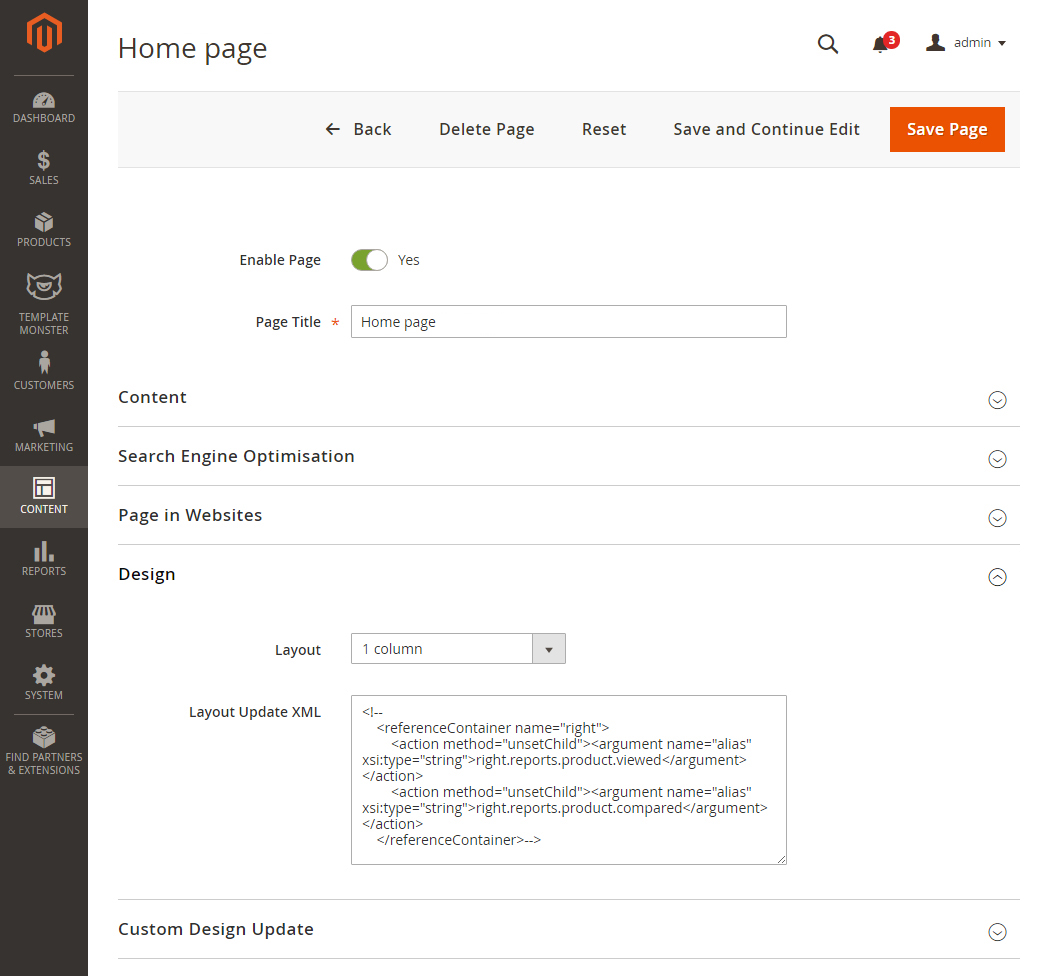
- Don't forget to select the valid "Layout" option.
- In case you need to add a new page, click the "Add New Page" button in the top right corner.
